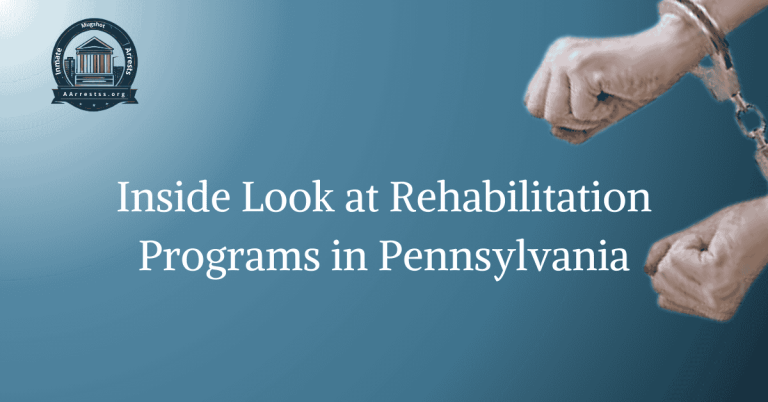Idaho’s County Detention Centers: Challenges and Solutions
Idaho’s County Detention Centers face numerous challenges in effectively managing inmate populations and providing adequate resources for rehabilitation and reintegration. Overcrowding, limited funding, and understaffing are just a few of the obstacles that these facilities must navigate on a daily basis. However, despite these challenges, there are innovative solutions being implemented to address these issues and improve the overall functioning of the detention centers.
One of the key challenges faced by Idaho’s County Detention Centers is the issue of overcrowding. The increasing number of inmates has put a strain on the facilities, leading to cramped living conditions and limited access to essential services. This not only impacts the well-being of the inmates but also hinders the ability of the staff to effectively manage and provide necessary resources.
Challenges Facing Idaho’s County Detention Centers
Idaho’s County Detention Centers are currently facing numerous challenges that greatly impact their ability to effectively manage inmate populations and provide adequate resources for rehabilitation and reintegration. These challenges include overcrowding, limited funding, and understaffing, all of which pose significant obstacles to the functioning of these facilities.
Overcrowding: A Major Issue
One of the primary challenges faced by Idaho’s County Detention Centers is the issue of overcrowding. The increasing number of inmates has resulted in cramped living conditions and limited access to essential services. This overcrowding not only affects the well-being of the inmates but also hampers the staff’s ability to effectively manage and provide necessary resources.
Impact of Limited Funding
Another significant challenge is the limited funding available to Idaho’s County Detention Centers. Insufficient financial resources can hinder the implementation of necessary programs and services aimed at rehabilitation and reintegration. This lack of funding also affects the overall quality of care and support provided to inmates, making it difficult to address their specific needs and facilitate successful reentry into society.
The Issue of Understaffing
Understaffing is yet another pressing challenge faced by these detention centers. A shortage of personnel can strain the existing staff’s ability to effectively manage inmate populations and maintain a safe and secure environment. It also limits the availability of resources for rehabilitation and reintegration efforts, further compromising the overall functioning of the facilities.
Innovative Solutions to Address Challenges
Despite these challenges, Idaho’s County Detention Centers are actively implementing innovative solutions to improve their functioning. These solutions include the introduction of alternative sentencing programs, increased collaboration with community organizations, and the utilization of technology to streamline operations and enhance efficiency.
Alternative Sentencing Programs
One approach to addressing overcrowding and limited resources is the implementation of alternative sentencing programs. These programs provide non-violent offenders with alternatives to traditional incarceration, such as community service, drug treatment programs, or electronic monitoring. By diverting individuals away from the detention centers, these programs help alleviate overcrowding and free up resources for those who truly require secure confinement.
Collaboration with Community Organizations
Recognizing the importance of community support, Idaho’s County Detention Centers are actively collaborating with local organizations to provide additional resources and support services to inmates. Partnerships with educational institutions, job training programs, and counseling services help address the underlying causes of criminal behavior and facilitate successful reintegration into society.
Utilizing Technology for Efficiency
Another innovative solution being implemented is the use of technology to improve the efficiency of operations within the detention centers. This includes the implementation of inmate management systems, video visitation platforms, and electronic medical records. By automating processes and reducing administrative burdens, technology helps maximize staff productivity and ensures that resources are allocated more effectively.
FAQs
What are the challenges faced by Idaho’s County Detention Centers?
Idaho’s County Detention Centers face various challenges such as overcrowding, limited resources, and outdated facilities. These challenges make it difficult to provide adequate living conditions and rehabilitation programs for inmates.
How does overcrowding affect Idaho’s County Detention Centers?
Overcrowding in Idaho’s County Detention Centers leads to increased tension among inmates, a higher risk of violence, and a strain on the staff. It also limits the availability of essential services and programs, making it challenging to ensure the well-being and rehabilitation of inmates.
What are the limitations posed by limited resources in Idaho’s County Detention Centers?
The limited resources in Idaho’s County Detention Centers result in insufficient staffing, inadequate medical and mental health care services, and a lack of educational and vocational programs. These limitations hinder the effective rehabilitation and preparation of inmates for reintegration into society.
How do outdated facilities impact Idaho’s County Detention Centers?
The outdated facilities in Idaho’s County Detention Centers pose safety and security risks for both inmates and staff. They lack modern infrastructure, technology, and security measures, making it difficult to maintain order, ensure inmate safety, and effectively manage the facilities.
What solutions can be implemented to address the challenges faced by Idaho’s County Detention Centers?
Possible solutions include investing in facility upgrades and expansions, increasing funding for staff recruitment and training, improving access to healthcare and mental health services, and implementing evidence-based rehabilitation programs. Collaboration with community organizations and stakeholders can also contribute to finding innovative solutions.
How can the community support Idaho’s County Detention Centers in overcoming these challenges?
The community can support Idaho’s County Detention Centers by advocating for increased funding and resources, volunteering to provide educational and vocational programs, and promoting awareness and understanding of the challenges faced by the centers. Collaboration between the community and the centers can lead to more effective solutions and positive outcomes for inmates and the community as a whole.
Conclusion
In conclusion, Idaho’s County Detention Centers face significant challenges in effectively managing inmate populations and providing adequate resources for rehabilitation and reintegration. Overcrowding, limited funding, and understaffing are just a few of the obstacles that these facilities must navigate. However, through the implementation of innovative solutions such as alternative sentencing programs, collaboration with community organizations, and the utilization of technology, these detention centers are actively working towards improving their functioning and addressing the challenges they face.







